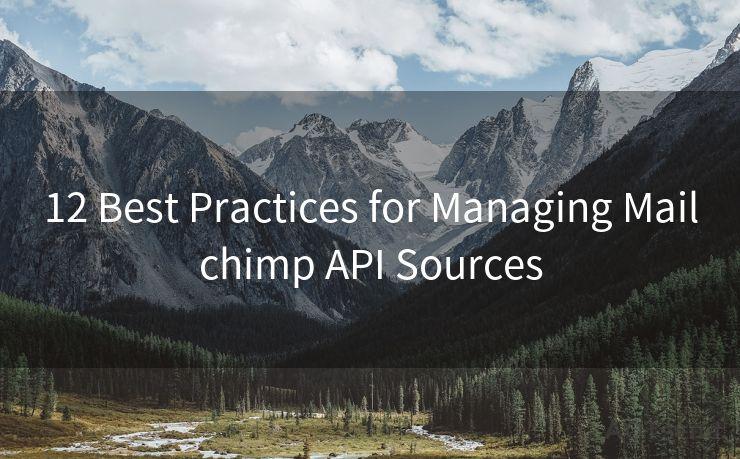12 Best Practices for Managing Mailchimp API Sources




When it comes to email marketing, Mailchimp stands as a leading platform, offering users a wide range of tools to create and manage their campaigns. One of the most powerful features of Mailchimp is its API, which allows for seamless integration with various data sources. Managing these API sources effectively can greatly enhance your marketing efforts. Here are the 12 best practices for managing Mailchimp API sources to help you maximize your email marketing potential.
1. Understand the Mailchimp API
Before diving into managing API sources, it's crucial to have a solid understanding of how the Mailchimp API works. Explore the documentation, understand the endpoints, and familiarize yourself with the authentication process.
2. Secure Your API Keys

Your API keys are the gateway to your Mailchimp account. Treat them like the keys to your house – keep them safe and secure. Never share your API keys publicly or store them in insecure locations.
3. Organize Your API Sources
As you integrate more and more data sources, it's essential to keep track of them. Create a spreadsheet or use a project management tool to document each source, its purpose, and any relevant details.
4. Test, Test, and Test Again
Before going live with any API integration, conduct rigorous testing to ensure data is flowing correctly and there are no errors. This step is vital to avoid any potential issues that could affect your email campaigns.
5. Monitor API Usage
Regularly check your API usage to ensure you're not hitting any limits. Mailchimp provides tools to monitor your API activity, which can help you stay within the prescribed limits.
6. Optimize Data Syncing
Efficient data syncing is key to maintaining up-to-date information in your Mailchimp lists. Set up regular syncs to ensure your email campaigns are targeting the right audience with the most relevant data.
7. Handle Errors Gracefully
Despite your best efforts, errors can occur. Implement robust error handling mechanisms to identify and resolve issues quickly, minimizing any potential downtime or data loss.
8. Leverage Webhooks
Webhooks are a powerful way to stay informed about changes in your Mailchimp account, such as new subscribers or unsubscribes. Utilize webhooks to trigger automations and keep your systems in sync.
9. Keep Up with API Updates
Mailchimp continuously updates its API to introduce new features and improve performance. Stay updated with these changes and adapt your integrations accordingly to ensure optimal functionality.
10. Segment Your Lists
Effective segmentation is key to targeted email marketing. Use the data from your API sources to create segmented lists, allowing for more personalized and relevant campaigns.
🔔🔔🔔
【AOTsend Email API】:AOTsend is a Managed Email Service for sending transactional emails. Support Email Types: reminders, authentication, confirmations, notifications, verification codes, invoices, password resets, account activations, billing statements, two-factor authentication (2FA), and one-time passwords (OTP) emails, etc. $0.28 per 1000 Emails. 99% Delivery, 98% Inbox Rate.
You might be interested in:
Why did we start the AOTsend project, Brand Story?
What is a Managed Email API, How it Works?
Best 25+ Email Marketing Platforms (Authority,Keywords&Traffic Comparison)
Best 24+ Email Marketing Service (Price, Pros&Cons Comparison)
Email APIs vs SMTP: How they Works, Any Difference?
11. Measure and Analyze
Regularly analyze the performance of your email campaigns to understand how your API integrations are impacting your marketing efforts. Use this data to fine-tune your strategy.
12. Maintain Data Integrity
Ensure the data flowing through your API sources is accurate and reliable. Implement validation checks and data cleansing processes to maintain the integrity of your email lists.
By following these 12 best practices for managing Mailchimp API sources, you can significantly enhance your email marketing efforts, improve targeting, and ultimately drive better results for your business. Remember, the key is to stay organized, test regularly, and continuously optimize your integrations.




Scan the QR code to access on your mobile device.
Copyright notice: This article is published by AotSend. Reproduction requires attribution.
Article Link:https://www.mailwot.com/p2652.html



